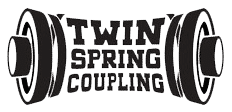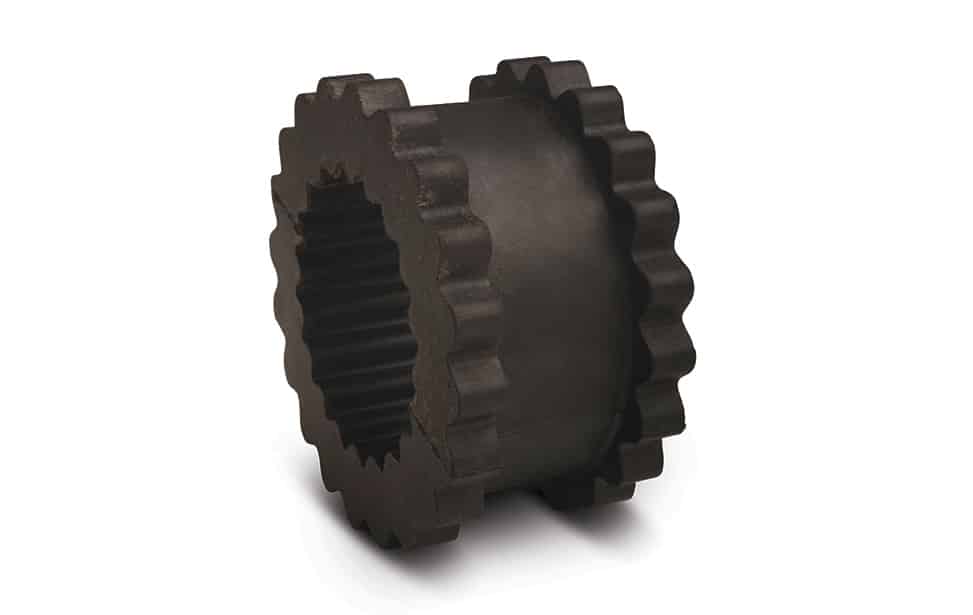Elastomeric vs Grid Couplings in Mining – Which Offers Better Vibration Control
Table of Contents
When managing high-torque applications in mining, ensuring equipment longevity and minimizing downtime are critical concerns. A vital component in maintaining reliable operations is the choice of couplings, particularly in managing shock loads and vibration. Elastomeric and grid couplings are two popular options, but which one is more effective in controlling vibration in mining applications?
As a reseller of mining coupling parts, I’m here to help mining industry parts managers find the right replacement couplings for their equipment at competitive prices. In this post, we’ll explore the performance of elastomeric and grid couplings, focusing on their vibration control capabilities in demanding mining environments. We’ll also highlight major OEM brands that manufacture these couplings to guide your purchasing decisions.
What Are Elastomeric and Grid Couplings?
Elastomeric Couplings
Elastomeric couplings use a flexible element, typically made from a polymer such as rubber or urethane, to transmit torque between two shafts. This flexible element is the key to their vibration control capabilities. The elastomer absorbs shock loads and dampens vibrations, providing smooth torque transmission even under fluctuating loads.
Key Features of Elastomeric Couplings:
- Shock Absorption: The flexible material reduces shock loads by absorbing energy from vibration and misalignment.
- Vibration Damping: The elastomer effectively dampens torsional vibration, reducing the stress on connected equipment.
- Misalignment Tolerance: Elastomeric couplings can handle angular, parallel, and axial misalignments.
- Maintenance-Free: Since there are no moving parts that require lubrication, elastomeric couplings are generally low maintenance.
Grid Couplings
Grid couplings, on the other hand, use a metal grid that transmits torque between the shafts via a series of flexible grid elements. The grid fits into slots cut into the coupling hubs and allows for movement and flexibility under load, offering some degree of shock absorption.
Key Features of Grid Couplings:
- High Torque Capacity: Grid couplings are designed to handle higher torque loads, which is a common requirement in mining equipment.
- Shock Load Mitigation: The grid flexes under load, reducing the impact of shock loads and improving vibration control.
- Durability: Made from steel or other robust metals, grid couplings are designed for rugged environments.
- Maintenance Requirements: Grid couplings require periodic lubrication, particularly in high-stress applications like mining, to maintain optimal performance.
OEM Brands for Elastomeric and Grid Couplings
Both elastomeric and grid couplings are widely used in the mining industry, with several major OEMs offering high-quality options. Here’s a look at some of the leading brands to consider when choosing couplings for your mining equipment:
Elastomeric Coupling OEMs:
- Lovejoy (A Timken Brand): Lovejoy offers a wide range of elastomeric couplings, known for their ability to absorb shock loads and compensate for misalignment. Their products are ideal for mining machinery like conveyors and crushers.
- Rexnord: Known for their T-Flex and Viva lines, Rexnord’s elastomeric couplings offer high vibration damping capabilities and are designed for durability in harsh environments like mines.
- TB Woods (Regal Rexnord): TB Woods specializes in elastomeric couplings that are designed for smooth, maintenance-free operation in demanding mining applications.
- Kop-Flex (Emerson Power Transmission): Kop-Flex elastomeric couplings are designed for high torque applications and offer superior shock absorption, making them a good choice for mining.
Grid Coupling OEMs:
- Rexnord (Falk Steelflex): Rexnord’s Falk Steelflex grid couplings are a popular choice in mining due to their ability to handle high torque loads while reducing vibration and shock.
- Lovejoy (A Timken Brand): In addition to their elastomeric options, Lovejoy also manufactures high-quality grid couplings that perform well in heavy-duty mining applications.
- SKF: SKF offers robust grid coupling options with their high-performance solutions tailored to the extreme conditions of mining.
- Dodge (Baldor Electric Company): Dodge offers grid couplings that are well-regarded for their durability and ability to handle shock loads, making them a reliable option for mining equipment.
Elastomeric vs. Grid Couplings: A Head-to-Head Comparison
Now that we understand how elastomeric and grid couplings work and the major OEM brands, let’s take a closer look at how they compare in terms of vibration control and other critical factors for mining applications.
1. Vibration Control
- Elastomeric Couplings: These couplings excel at damping vibration due to the inherent flexibility of the elastomer material. This makes them ideal for applications where vibration could cause excessive wear on equipment or reduce precision in operations.
- Grid Couplings: Grid couplings provide moderate vibration control through the flexing of the grid elements. However, the metal grid doesn’t offer the same level of damping as elastomeric materials, making grid couplings less effective at controlling high-frequency vibrations.
Winner for Vibration Control: Elastomeric Couplings
2. Shock Load Absorption
- Elastomeric Couplings: The elastomer absorbs shock loads efficiently, protecting connected machinery from sudden impacts and ensuring smooth torque transmission.
- Grid Couplings: While grid couplings offer shock load absorption, it is achieved through the flexing of the metal grid, which is more rigid than elastomeric materials. As a result, elastomeric couplings generally offer superior performance in absorbing shock loads.
Winner for Shock Load Absorption: Elastomeric Couplings
3. Torque Capacity
- Elastomeric Couplings: While elastomeric couplings offer excellent flexibility, they may not be suited for extremely high-torque applications. The elastomer material can wear out under prolonged exposure to very high loads.
- Grid Couplings: Grid couplings are built for high-torque environments and can handle the heavy demands of mining equipment without failure, making them more appropriate for equipment like large crushers and draglines.
Winner for Torque Capacity: Grid Couplings
4. Durability and Maintenance
- Elastomeric Couplings: Since there are no moving parts, elastomeric couplings are generally maintenance-free. The elastomer material can wear over time, but it can be easily replaced without disassembling the entire coupling.
- Grid Couplings: Grid couplings are highly durable but require regular lubrication to avoid excessive wear on the metal grid. Maintenance schedules are crucial to ensuring long-term reliability in mining operations.
Winner for Durability and Maintenance: Elastomeric Couplings (low maintenance) and Grid Couplings (high durability)
5. Misalignment Tolerance
- Elastomeric Couplings: These couplings handle misalignment well, particularly angular and parallel misalignments, making them suitable for mining equipment where shafts may not always be perfectly aligned.
- Grid Couplings: Grid couplings also tolerate misalignment, but they may not perform as well as elastomeric couplings in handling large degrees of misalignment.
Winner for Misalignment Tolerance: Elastomeric Couplings
Which Coupling Is Better for Mining?
The answer depends on your specific mining application and priorities.
- Elastomeric Couplings are ideal if vibration control, shock load absorption, and low maintenance are top priorities. These couplings are perfect for applications where misalignment and vibration damping are crucial, such as conveyors, pumps, and smaller equipment.
- Grid Couplings excel in high-torque applications where durability and the ability to handle heavy loads are essential. If your equipment demands high torque and you’re prepared for regular maintenance, grid couplings may be the better choice.
Major OEM Brands for Mining Couplings
To ensure reliable performance, consider the following major OEM brands for elastomeric and grid couplings:
- Lovejoy (A Timken Brand)
- Rexnord (Falk Steelflex)
- TB Woods (Regal Rexnord)
- Kop-Flex (Emerson Power Transmission)
- Dodge (Baldor Electric Company)
- SKF
These brands are well-established in the mining industry, known for their quality, durability, and long-lasting performance.

